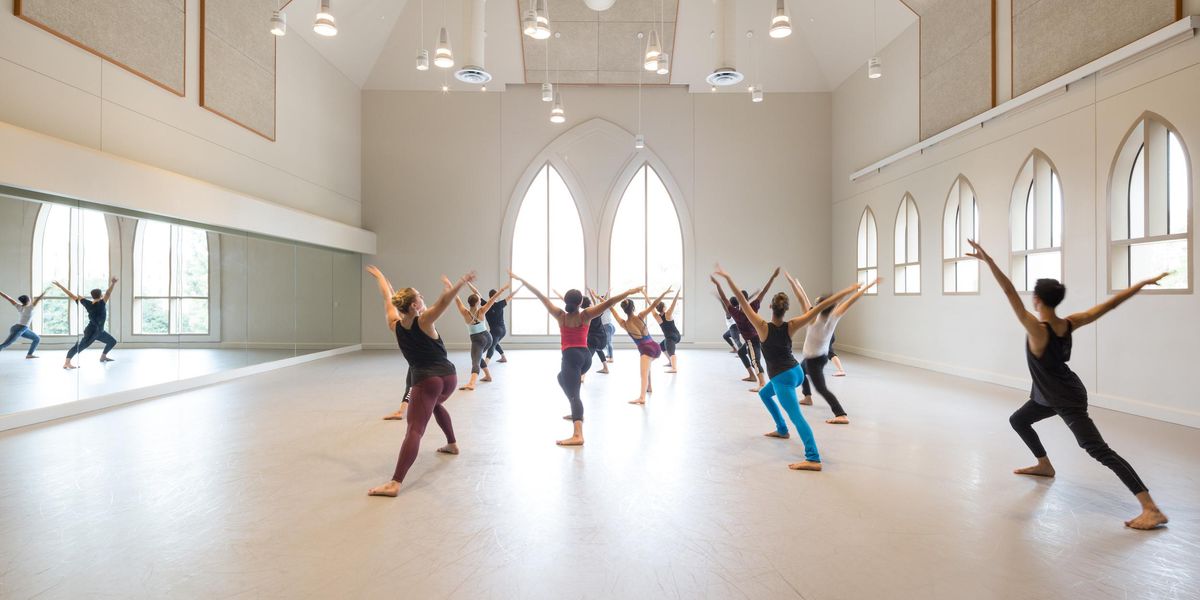Centerwork: Rhythm, Clarity, Style
Three tap experts on how to master the essentials
Ray Hesselink teaches at Broadway Dance Center. Photo by Kyle Froman.
Though they live far apart on the tap spectrum, show tap, rhythm tap, and hoofing are all connected by three main features: They require rhythmic precision, clarity of sound, and personal style. The three components work synergistically, creating tapping that sounds and looks dynamic. Dance Magazine chatted with some of New York City’s most sought-after tap teachers—each with a distinctive approach to movement and teaching—about how to master these fundamentals.
Ray Hesselink: Classic Elegance
Lanky, debonair Ray Hesselink captivates students with his sense of humor and the sparkle in his eye. Broadway veterans and hopefuls alike flock to his classes for his method of teaching show tap, the graceful style of the MGM golden era. “In show tap, there’s a sensibility of sophistication, like dancing in a ball gown,” Hesselink says.
To achieve the basic look, Hesselink instructs students to put their arms in a soft second position during warm-up, for balance, and uses first- and second-position arms in turns. “In combinations the arms are free-flowing, but students must actually use them, initiating the movement from the back, instead of letting the arms flop to the side,” he says.
Hesselink also advises students to “think about the inside feeling first. Are you imagining Central Park or a ballroom? The more visual you are, the more you’ll have life in your eyes as you dance.” Watching old movie musicals and studying other dance forms is helpful, too. “Hopefully, you’re taking from a teacher whose style you like,” he says. “Try to emulate them. Then, in contrast, take risks and find your own voice.”
For clarity, Hesselink insists on a relaxed ankle. “The more relaxed the ankle, the more control you have along with the possibility of speed,” he says. “Without it, you’ll get a scrape.” To encourage a relaxed ankle, work on nerve taps (quick, close-to-the-ground tapping) of the ball of the foot, heel, and toe, at different tempos.
To help students master rhythm, Hesselink uses a variety of tools. First, he emphasizes basic counting (which, surprisingly, not all tap teachers do). Next, he says, “my students learn to complement or match the melody of the music with their own sounds. Imagine you’re an instrument in an orchestra. You may have the melody or harmony line. Humming the melody you’re creating, while deciding on dynamics like crescendos, improves rhythm.” Finally, he encourages dancers to understand where they’re putting accents. “Everyone digs hard on the paddle and roll count ‘one.’ But what if you execute one smooth melody line? Then you’re becoming the master of your own rhythm and clarity.”
Barbara Duffy: Full-Bodied Tapping
Barbara Duffy brings a jovial energy to the studio. Of her rhythm tap method, she says, “my style and class are about clarity of the feet as a musician but using the whole body. Physicality of the legs and butt—exaggerated movement, so your feet can execute the steps—are top priorities.” She asks dancers to find a placement unlike what they might learn in ballet. “The butt comes out a bit, without arching the back, with the balls of the feet directly underneath the hips.”
For Duffy, clarity is tied to how a dancer approaches the floor with the entire foot and leg. “If you put a foot down too far away from the other leg, you won’t get a clear, steady sound, so your placement must be specific,” she says. “This brings weight shift into play, too.” To get students on their legs, she asks them to push from one foot to the other in an up-and-over motion, instead of gently side-to-side.
Like Hesselink, Duffy advocates singing, but doing so with the names of the steps in the rhythm. She also asks students to scat the rhythm. “Scatting helps them understand the rhythm,” she says, “before they attempt to transfer it down to their feet.”
Jared Grimes: Dancer As Musician
From tap to hip hop, from musical theater to the concert stage, Jared Grimes is a versatile dancer and teacher. His class is firmly rooted in rhythm tap, but hoofers find it especially appealing. “Everything in my class is based on being comfortable with being a musician first instead of simply a ‘tap dancer,’ ” Grimes explains.
Based on this idea, Grimes teaches his classes largely without music. He works with the rhythm-tap tradition of call and response, especially throughout the warm-up, made up of basic steps like toe taps and heel drops. “I create the rhythm and then the students mimic it,” he says. “It increases a student’s rhythmic ear.”
To further hone the ear and improve clarity, Grimes begins with simple repetition for muscle memory, then lets it build in speed and difficulty. “I start with long exercises that are basic at first, then let that grow and push it to the extreme,” he says. “For example: toe taps, then double toe taps, then taking that further until the students can’t go any faster. Then, a simple rhythm, then syncopating the rhythm, then an intense rhythm, so there’s always something to work toward. If the dancers get frustrated, I slow down and build back up.”
For Grimes, style means finding balance. “Gene Kelly, the Nicholas Brothers: They had perfect balance. It’s what makes you comfortable,” he says. For himself, Grimes feels dancing on the balls of his feet, even while hitting movement heavily, allows him to attack immediately. To help students find their own center, he suggests cramp rolls from right to left and syncopation exercises, which “help dancers understand how to hold a beat with one foot and syncopate with the other. That takes extreme balance. Knowing how to distribute your weight gives you the freedom to look up, stick your chest out, and smile.”
Lauren Kay is a NYC dancer and writer.




